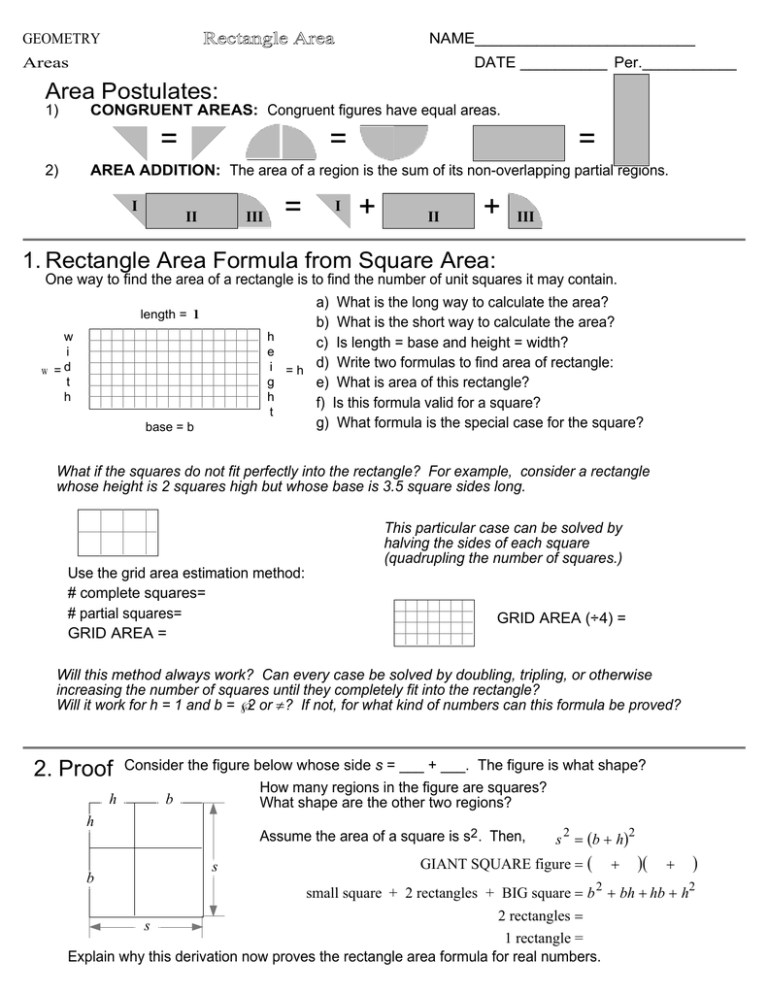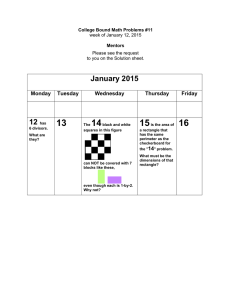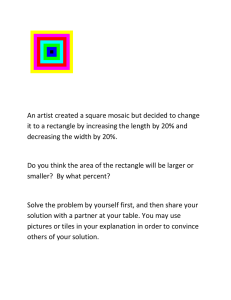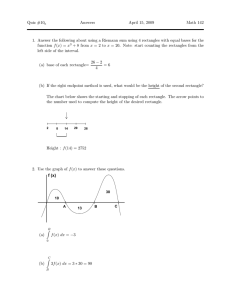1. 2. Proof Rectangle Area Formula from Square Area: Area
advertisement

Rectangle Area GEOMETRY NAME_________________________ DATE __________ Per.___________ Areas Area Postulates: 1) CONGRUENT AREAS: Congruent figures have equal areas. = 2) = = AREA ADDITION: The area of a region is the sum of its non-overlapping partial regions. I II III = I + II + III 1. Rectangle Area Formula from Square Area: One way to find the area of a rectangle is to find the number of unit squares it may contain. a) What is the long way to calculate the area? length = l b) What is the short way to calculate the area? w h c) Is length = base and height = width? i e i = h d) Write two formulas to find area of rectangle: w =d t g e) What is area of this rectangle? h h f) Is this formula valid for a square? t g) What formula is the special case for the square? base = b What if the squares do not fit perfectly into the rectangle? For example, consider a rectangle whose height is 2 squares high but whose base is 3.5 square sides long. This particular case can be solved by halving the sides of each square (quadrupling the number of squares.) Use the grid area estimation method: # complete squares= # partial squares= GRID AREA = GRID AREA (÷4) = Will this method always work? Can every case be solved by doubling, tripling, or otherwise increasing the number of squares until they completely fit into the rectangle? Will it work for h = 1 and b = √2 or π? If not, for what kind of numbers can this formula be proved? Consider the figure below whose side s = ___ + ___. The figure is what shape? How many regions in the figure are squares? h b What shape are the other two regions? 2. Proof h b Assume the area of a square is s2 . Then, s s 2 = (b + h)2 GIANT SQUARE figure = ( + )( + ) small square + 2 rectangles + BIG square = b 2 + bh + hb + h2 2 rectangles = s 1 rectangle = Explain why this derivation now proves the rectangle area formula for real numbers.


